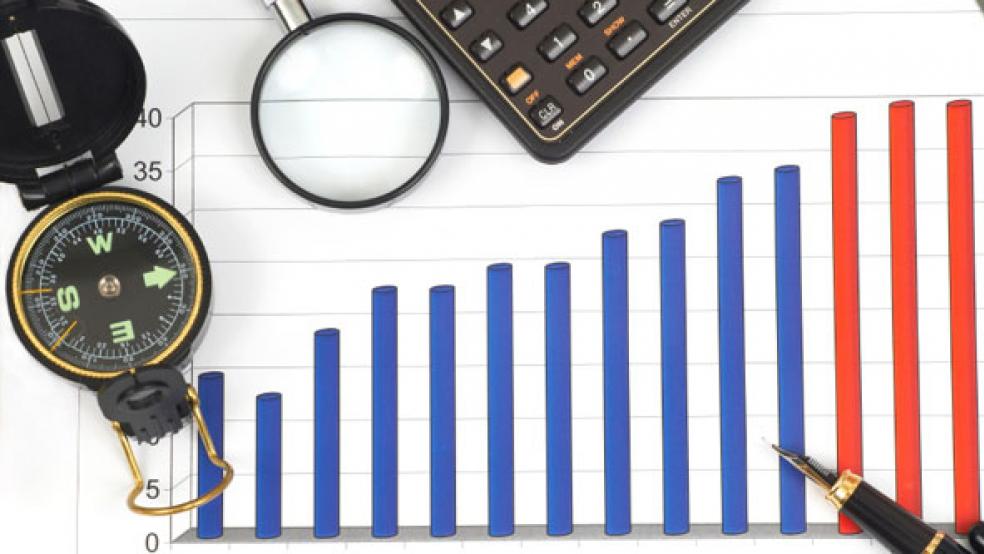After several years of rising returns, 401(k) investors will be reminded with their next statements that investments in the stock market don’t always go up. The S&P 500 is down more than 8 percent over the past three months, and volatility is on the rise.
Despite the recent turmoil, the average 401(k) balance is up 50 percent in the last five years, which has led to an increased percentage of equities in many 401(k) accounts, making them more susceptible to market risk, according to a new report from Fidelity Investments.
The group of investors that could be taking the most risk is the group that can afford to do so the least: Baby Boomers. The generation that is just approaching or entering retirement has the least amount of time to make up for money lost in the market during a downturn. Just ask any of the folks who saw their retirement dreams torpedoed back in 2008.
Fidelity found that 11 percent of investors ages 50-54 had 100 percent of their 401(k) assets in stocks, while 10 percent of those 55-59 had all of their portfolio in stocks. An additional 18 percent of people ages 50-54 had a stock allocation at least 10 percentage points higher than recommended, and that figure increased to 27 percent for those ages 55-59. (Fidelity recommends that people in their mid-50s should be about 70 percent in stocks.)
There may be legitimate reasons for some Boomers to be heavily invested in stocks. A retiree with a pension plan, for example, may be able to take more risks with his investments, and those who know they’re due for a sizeable inheritance might also have a strong case for taking risks with their retirement funds. For many investors, however, having a stock-heavy 401(k) portfolio could be putting their retirement at risk. “It really does depend on your individual situation,” says Rob Austin, director of retirement research at Aon Hewitt.
Related: The Worst States For Retirement in 2015
Failure to rebalance
Part of the reason for Boomers’ overexposure to stocks is that the recent bull market has increased the value of stock holdings and many investors have not rebalanced accordingly. “People have a natural tendency, regardless of their life stage, to that if something has been working for them, they just want to leave it and let it roll,” says Christine Benz, director of personal finance at Morningstar.
Another factor is that Baby Boomers have put so much money into stocks is that they’re behind on their retirement savings. The average boomer is facing a shortfall of at more than $70,000, according to a report by the Employee Benefit Research Institute.
With numbers like that, it can be tempting with to shoot for the higher returns that the stock market can deliver, but those returns come with a risk that grows as your time horizon shortens. The trouble is that the bond market, a traditional safe haven for retirees and near-retirees, has had dismal returns since the recession. With an interest rate increase looming, that’s not likely to change any time soon.
Still, if you’re approaching retirement, you’ll need to begin dialing back your equity exposure. Use an online asset allocation calculator to get a sense of the appropriate mix for you based on your risk tolerance and time horizon.
Trading risk for security
Getting from your current portfolio mix to one that’s more age-appropriate won’t be pleasant. You’ll likely have to sell stocks at a lower price than you could have gotten a few months ago, but remember that stocks are still up more than 13 percent over the past three years and are generally ahead of other asset classes. Another way to fix your mix is to decrease the portion of your future investments that are going to stocks.
Related: 10 Best Cities for a Healthy Retirement
Unfortunately, there aren’t great options for what to do with the money you take out of equities, but remember you’re trading returns for security. Look for short-term bonds funds or a CD ladder that will give you safety and the potential to reinvest for higher returns later.
Once you’ve determined the right asset allocation, see if your company offers an automatic rebalancing option; using that feature can help protect you from future market swings. “In a 401(k), you’re not going to try to chase what happens to be performing well,” says Katie Taylor, director of thought leadership at Fidelity. “It’s more about how much time you have, what your risk tolerance is, and how much you really need in retirement.”
In addition to having a diverse portfolio of investments once you’re at retirement age, you’ll want to have at least two years worth of expenses in cash, so that you’re not forced to sells tocks in a down market in order to meet your basic expenses.
Shoring up
If you’re still feeling uncertain about your security in retirement -- more than one in five workers are -- you may need to make some other big financial moves to shore up your finances. Start by eliminating any current debt and avoiding new loans (tell the kids to take out their own college loans). Then look at other ways to close your retirement shortfall, such as downsizing your home or scaling back your lifestyle.
Your biggest weapon in closing the gap is simply retiring later. Every year that you work is another year you can not only contribute to your retirement accounts -- those over 50 can stash $18,000 per year in a 401(k) as well as a $6,000 “catch up” contribution -- but also put off drawing on them. In addition, you’ll increase your monthly Social Security check every year you delay collection.





